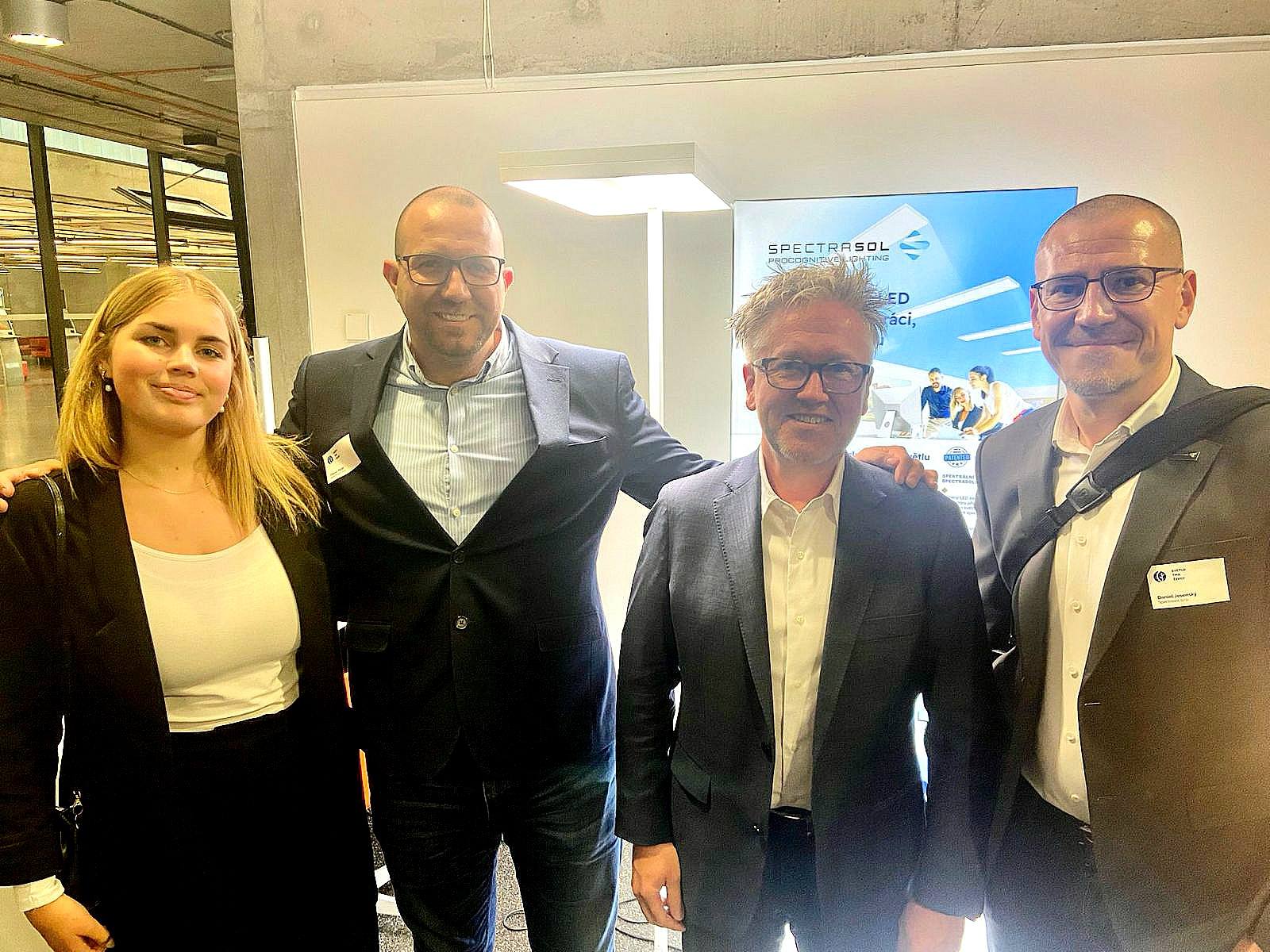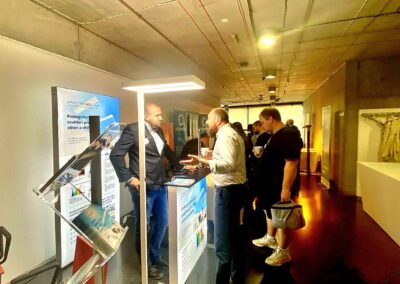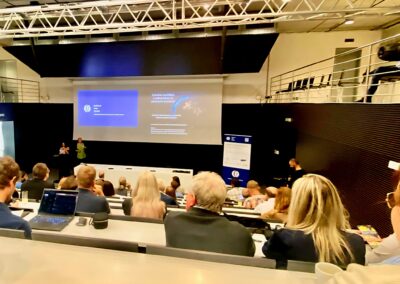At Spectrasol, we live by light and closely follow developments in this field. That is why we could not miss the conference *Light, Darkness, Life 2025: The Path to Change*, which took place on September 11, 2025, at the National Technical Library in Prague’s Dejvice district. The meeting of experts brought a number of key topics from the world of lighting that are gaining ground in the Czech environment: the impact of light on human health, the importance of proper placement of lighting in interiors, and the issue of light pollution.
It is great that the topic of light hygiene is increasingly attracting the attention of politicians and public administration. This was reflected in the opening speeches of Senator Jiří Dušek and Anna Pasková, Director of the Department of Environmental Policy and Sustainable Development at the Ministry of the Environment. Both speeches focused on the problem of light pollution and on supporting healthy lighting in buildings.
Light as Medicine and Prevention
Professor Martin Anders, Head of the Psychiatric Clinic of the First Faculty of Medicine of Charles University and General University Hospital in Prague, spoke about the influence of light on both physical and mental health. Diseases that affect modern society—such as depression, anxiety, heart disease, diabetes, or asthma—are significantly linked to changes in how light impacts the human body, so-called circadian disruption. One of the solutions is proper lighting and, in case of problems, phototherapy, as confirmed by many studies and clinical experiments. An example of this is the installation of Spectrasol full-spectrum lighting at the Vondráček Institute. The positive effects of phototherapy on mental illness were also confirmed by Dr. Jana Kopřivová from the National Institute of Mental Health.
Light Distribution and Quality in Interiors
Lenka Maierová from the University Centre for Energy-Efficient Buildings (UCEEB) of the Czech Technical University in Prague followed with a topic that concerns all of us—indoor lighting. If light is not properly designed, it can lead to fatigue, reduced energy, poorer concentration, as well as long-term vision problems and overall health issues. According to Dr. Maierová, three components are essential for good indoor lighting: sufficient light, proper distribution of lighting within the space, and a spectral composition as close as possible to natural sunlight.
Biological Lighting
Associate Professor Petr Baxant (Brno University of Technology) introduced the concept of the International Commission on Illumination (CIE) Melanopic EDI Lux, a modern method of measuring lighting in terms of its biological effects on humans. This concept addresses how light affects our biological clock and compares electric light with natural daylight. He also mentioned the recommendation that the daily standard for lighting should be the CIE D50 standard, i.e. a correlated color temperature (CCT) of 5000 K. (We completely agree—Spectrasol lights have been shining at around 5000 K since the very beginning of our production.)
Throughout the conference, there were several demonstrations of Spectrasol technology installations (e.g., at the General University Hospital in Prague and the National Institute of Mental Health). At our information booth, we had the opportunity to discuss important topics and answer curious questions. We are very pleased that interest in healthy full-spectrum light is growing, and that people are recognizing its meaning and effectiveness. We are glad we could be part of it.
Translated using AI




